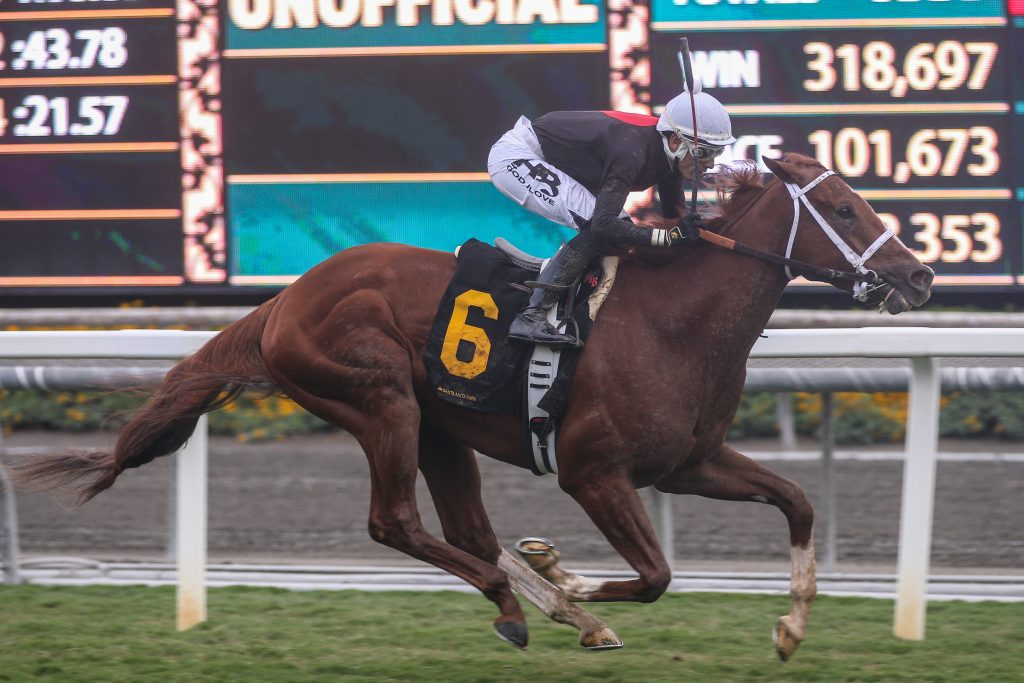
track. And so, whoever gets there first is the winner. But not everything is so clear that you can easily place your bets. Racing involves various types of information that are not always easy to interpret.
That’s the case with a horse racing program composed of well-packed information that can often be confusing. What to do when you receive a brochure full of the Breeders Cup information that is not easy to read and interpret as a newbie? Do you focus on the 2022 Breeders’ Cup favorites? What are the details that really shouldn’t be ignored? We will explain how to read a horse racing program. But before that, let’s take a quick look at the relationship between humans and horses:
The Relationship Between Horses and Humans
It could be said that humans competed in horse races since this animal was domesticated for the first time – a whopping 6000 years ago. There is evidence that the Hittites already practiced races of this type around 1400 BC.
Ancient cultures placed much importance on horses, which often played a crucial role in wars. During the Roman Empire, between 27 BC and 476 AD., the Romans incorporated this animal in their well-known chariot races. It’s to the Romans that we owe the word hippodrome, so widely used today.
What’s interesting is that horse racing programs have also been used since the ancient days, and below, we will discuss the things you need to know about them.
The Typical Horse Racing Program
The information presented in a horse racing program may seem confusing, but analyzing it in parts makes it easy to understand which horses will be racing on the track.
Horse Name, Jockey, and Owner
One of the few things you can read that is most important to assimilate in a horse racing program is the horse’s name and betting number. That’s because, normally, it’s presented along with information about its owner and jockey. Uniform description is also important, as it will help you recognize the jockey during the race.
Identifying uniforms is a straightforward way to check if a particular owner has any horses running that day. Typically, every homeowner will have their patterns and colors.
About a horse racing program, you should focus on the following topics :
- Check the horse’s name and compare it with the odds on the big screens of the racetracks.
- Check if the owner has had other horses running and the results.
- Check the jockey’s uniform to analyze the horse’s behavior in the paddock before the race. It can be an essential indicator of your performance.
The Race Records
If you’ve already mastered the basics, you can now analyze past horse performance results, presented at the bottom of the program.
When you take a look at a horse’s records, you should focus on the following points:
- The horses’ last performances, along with the race number or state (Keeneland, Kentucky, etc.)
- The horses’ placements, along with competitors and the goal number
- Details about the jockey (weight, uniform, etc.)
- You will be able to get details such as the value of the horse for every $1 bet.
- Finally, you will be able to see the total number of performances and placements on the different types of tracks.
Previous Results
In this turf business, checking the records of the horses in previous races is essential. Only then will you be able to know which horse can bring you more profit for each real bet.
Most of the time, you will be able to analyze the following details from left to right:
- Date
- Track abbreviation (or state where it was run) and race number
- track conditions
- race time
- Race restrictions, age restrictions, handicaps, etc.
- type of race
- starting position
- finish position
- jockey name
- Loaded weight, including equipment
- Medical equipment
- Quotas
- Weight carried by the top 3 horses in the race
- Comments
- Number of horses in the race
Other details may also be :
- Placement at the entrance of the line
- Difference between horses from the first place
When betting, the most important factors you should consider are the conditions and type of track, the finishing position of the horse in the last race, and the jockey. However, do not forget that the past results of a given horse are only indicative.
They provide essential information but can lead you to make the wrong decision. For example, if a horse is champion on grass tracks and won the last race, remember that its performance may be very different on a sand track or closed, so you should think carefully before placing your bets.
Symbols and Abbreviations
When horse racing programs are made, a lot of information must be compressed to summarize it. Therefore, symbols and abbreviations are used.
These symbols and abbreviations provide vital information about track conditions, for example. And that, thus, can be fundamental when placing your bets. Also, imagine you want to bet on a sand race, and your favorite horse won the last sand race.
But before making your decision, you should know the track conditions of the previous and the current race. For example, the current track may be muddy because it rained, and the previous one was not. All these factors are important when betting.
So, if the information presented in the program reveals that the last performance of a particular horse was on a GL-7 track, for example, this means Light Grass, with a moving fence of 7 meters. The abbreviation E indicates that the track was soaked.
Conclusion
A horse racing program may be complex, but if you can identify and interpret the primary focuses, you have all the information you need to make your bets successful.
As seen in any bookmaker, horse racing is a discipline that has maintained great popularity over the years. Known as the sport of kings, they have been played in many different modalities throughout history.
Today, it’s an equine practice that moves a lot of money and is one of the best-known options for placing bets, as seen on online horse racing betting pages. However, its characteristics and rules have been changing to adapt to each era.



